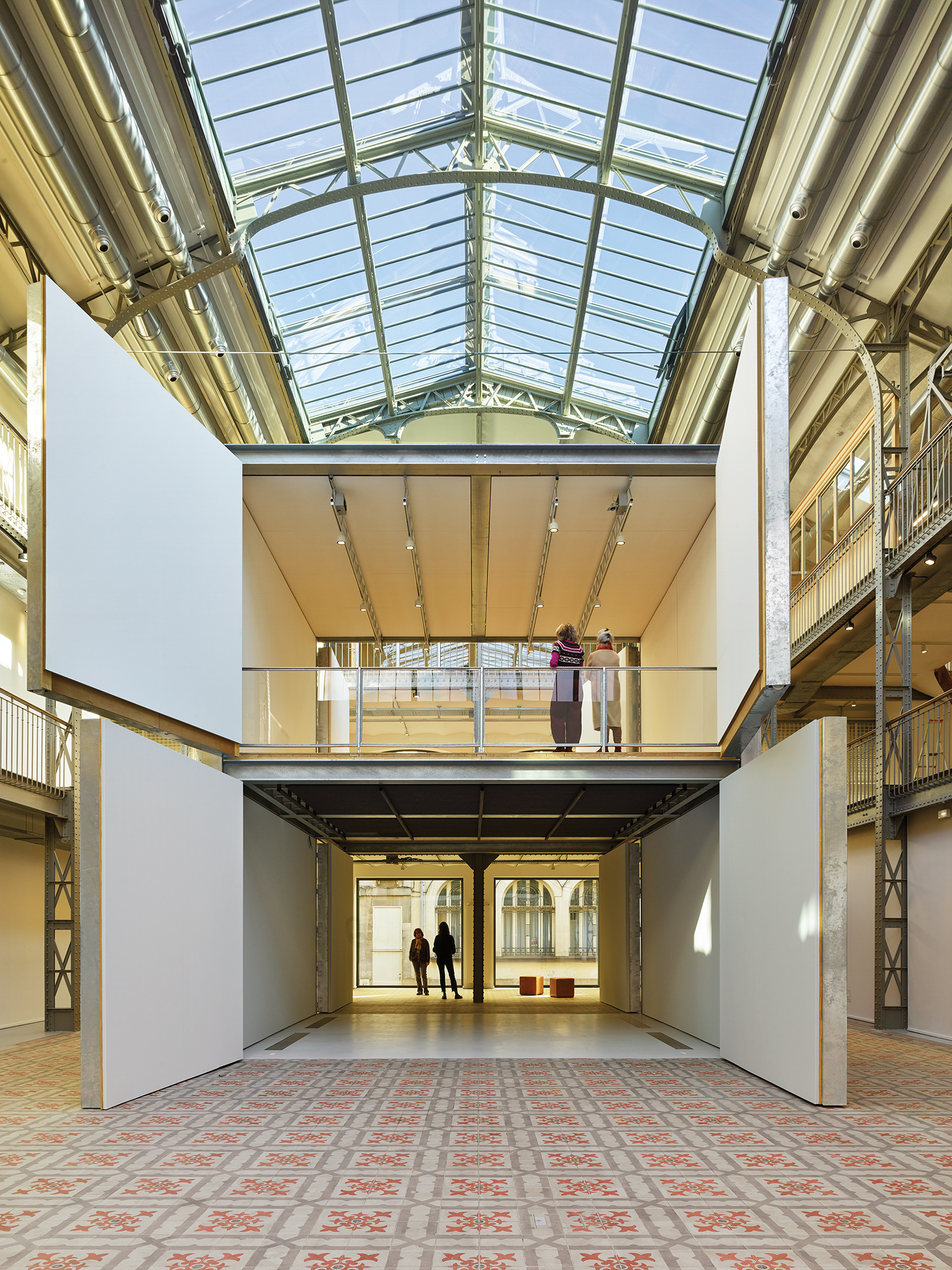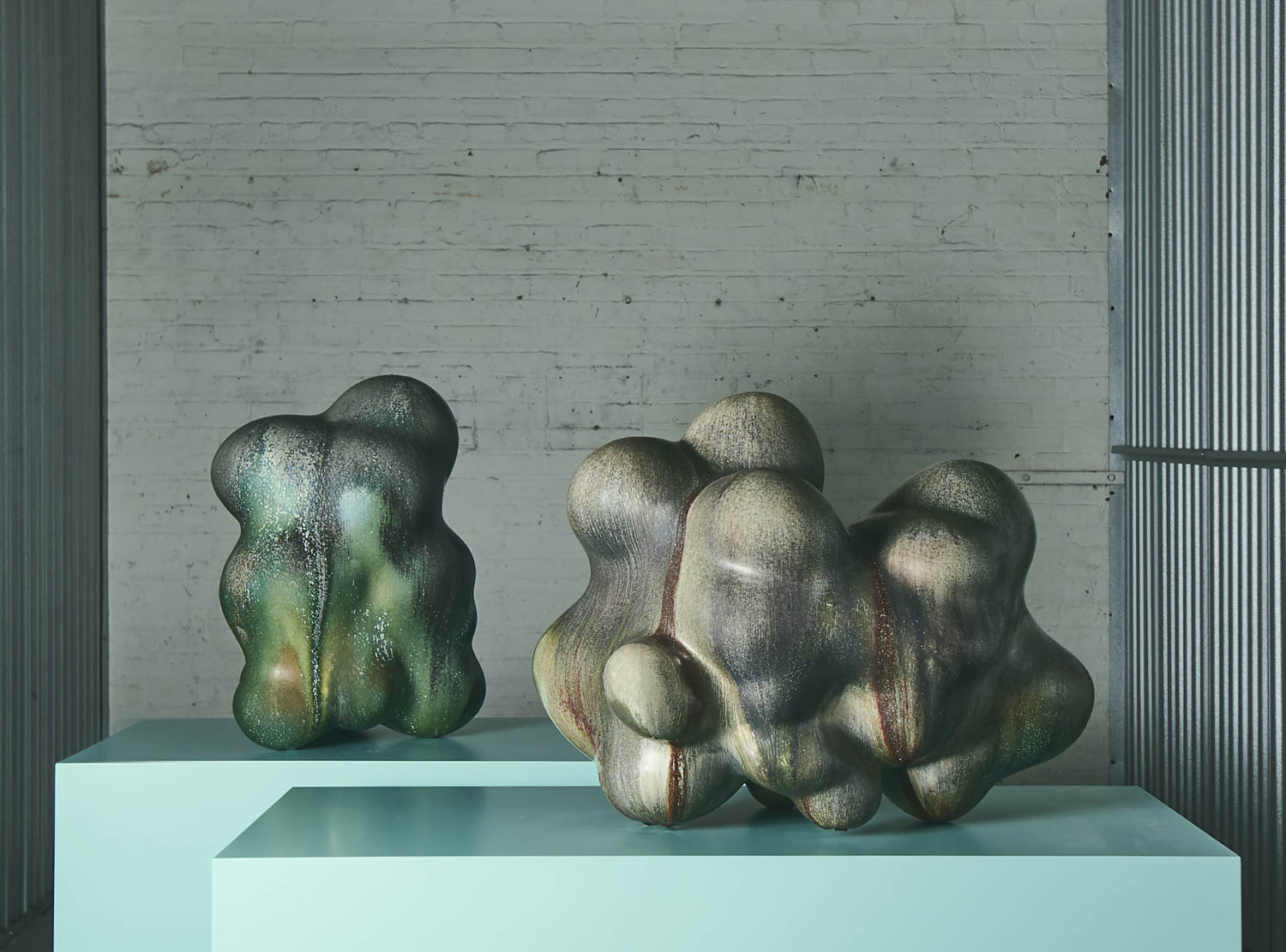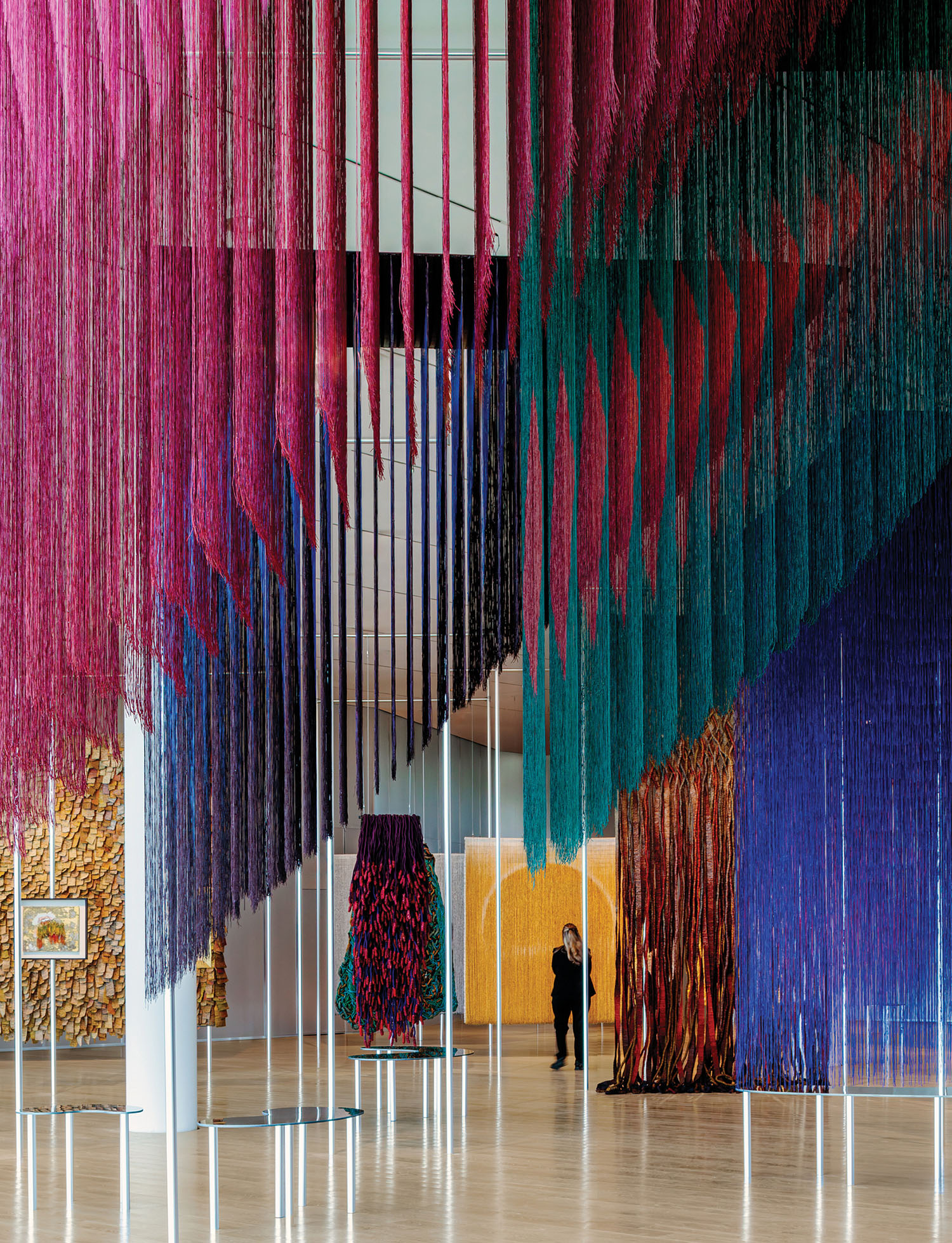10 Questions With… Kulapat Yantrasast
Kulapat Yantrasast, founding partner and creative director at the L.A.-based design firm wHY, believes museum architects should act like matchmakers. “You set the atmosphere so that both [the art and people] will be comfortable … and then you leave the room,” he says. Yantrasast, who describes his design philosophy as “very human,” has been creating inviting, sunlit places for people and art to mingle for close to 20 years now. First with his mentor, Pritzker Prize winner Tadao Ando—who he worked with in Japan for more than seven years—and now at wHY, which he started in 2004. Now a coveted “matchmaker,” Yantrasast’s impressive list of art-related work includes Michigan’s Grand Rapids Art Museum, the world’s first art museum to receive LEED Gold certification; exhibition spaces in Renzo Piano’s Harvard Art Museums; the transformation of L.A.’s Scottish Rite Masonic Temple into a private museum; and renovations of the Art Institute of Chicago’s galleries.
On March 12, Yantrasast will see the public unveiling of his latest big project—wHY’s renovation and expansion of the Speed Art Museum in Louisville, Kentucky, which encompasses approximately 220,000 square feet and includes a new 62,500-square-foot glass-walled building. Here, he discusses his cultural influences, his love of concrete, and his thoughts on why museums need to be more like octopuses.
 Interior Design: How did you end up becoming one of the go-to architects for art museums and galleries?
Interior Design: How did you end up becoming one of the go-to architects for art museums and galleries?
Kulapat Yantrasast: I think because I like art and I like to make good spaces for it. And I think because when I worked with my mentor, Ando, and a lot of the projects I worked on were art-related things—museums, art collectors houses, and things like that. It kind of grew within me, this balance between art and architecture. So that’s always been what I love to do. And I hope because of experience people see that quality in me as well, so they give me chances.
ID: How does your Thai upbringing, combined with your time in Japan spent working with Tadao Ando, influence your work today?
KY: I think, like they say, sometimes you have to go away from home to be yourself. So I think I understood and became even more inspired by my Thainess by being away from it in Japan, which in the Asian scale is quite opposite. Japan is very minimal, very systematic, very refined and Thailand is very raw and very spontaneous. So the opposite values are kind of aligned. I think we all have both in our lives and in our beings. To be able to see the two and kind of curate and oscillate between them has become something I am really excited about.
I think my time with Ando is quite an important chapter in my life. The aspect of talk the talk, walk the walk is very important—that the philosophy is in the work, not in the speech. That’s something I learned from him. But it’s not just Ando per se, it’s the whole Japanese culture in general that gave me such an education in how simple things can have so much power.
ID: Art museums are sometimes talked about as if they’re works of art themselves. And in some ways the museum building can seem like its largest sculpture. I’m curious to hear your thoughts on the idea of architecture as art.
KY: People believe that architecture that looks like sculpture is art and architecture that does not look like sculpture is not art, which is a very boring and rather shallow way of looking at architecture. Architecture as art has to be considered on its own merit. I think it’s a tragic situation that people consider architecture as art only when it tries to mimic sculpture, because architecture has its own relationship to people as art.
For me, architecture is art when it really touches people. When you look at Frank Lloyd Wright, Le Corbusier, Louis Kahn, I think they’re art because of how they relate to human experience—how people use it over time and how people get delight and inspiration and understand themselves more from the work that these people did.
ID: What are some of your strategies for designing friendlier museums—where everyone feels free to engage—and why do you think this is important?
KY: I think there are two prongs to that question. Prong number one is that a museum is a matchmaker between people and art. Imagine these two things as your best friends who do not know each other well and you’re trying to introduce them. You set the atmosphere so that they both will be comfortable—both the art and the people—and then you leave the room. You want them to have the conversation themselves. The problem with most architecture is that the architect never wants to leave the room. They want to be in every conversation. The other is that art museums’ meaning has changed greatly. They were built like stone temples for people to hang art inside, almost like mausoleums. That model is so obsolete and wrong. People relate to art and consume art in so many different ways—not just by passively looking at it on a wall. If the museum wants to be a relevant building type, it’s going to have to redefine itself for the 21st century.
ID: You described your approach to the renovation and expansion of the Speed Art Museum as “acupuncture architecture.” I’d love to hear more about what that term means to you.
KY: Some of the buildings we do—the Speed Art Museum for example, or the Art Museum of Chicago, or even the Harvard Art Museums—all of these buildings were built more than 100 years ago, or close to 100 years ago. Every institution is like a grandmother or grandfather… Acupuncture believes that the body has the energy to heal itself. In a sense, this is about helping the energy of an institution resolve its own problems. “Architecture acupuncture” doesn’t look at a building as brick and mortar. It looks at it as a brand, as an institution, as alive. So your work is not just to add another wing, another limb, another body. Instead, you must try to help solve the problem that the old body has by clearing circulation, decentralizing functions, and creating a better connection from the body to the outside. This allows the soul of the museum to thrive and connect better to people and our time while maintaining its original DNA and identity.
ID: It seems like there was a lot to negotiate with the Speed Art Museum project—the original 1927 museum, the previous renovations, as well as the borders between the university campus, the city and street, and the park. What were your primary goals for the project?
KY: The Speed had a classic case of problems that a lot of museums from that generation have. It had become isolated from everyone. No one would go in because it looked like a Supreme Court or mausoleum, and it had become very fragmented. Museums collect architecture as much as they collect art. Every generation tries to update and modernize their museums. So my goal with the museum’s master plan and expansion was to honor these different pieces of architecture that make up the museum and make sure the transition from one piece to another enhances visitors’ delight and understanding of the museum’s purposes and growth.
The second thing, which is even more important, was the idea of connecting the museum to the surrounding landscape and the surrounding people. It sits on University of Louisville campus, which has 10,000 students passing by every day, and no one was going in. The idea of really creating transparency, visibility, and activities that connect to the outdoors was the most important part of the transformation. We wanted to decentralize the museum program. What I mean by that is, in traditional museums, in traditional buildings for that matter, the design is like a peacock. You go into the lobby, and from the lobby you can go to all these different rooms, galleries, classrooms, auditorium, cafe, and bookstore. They all centralize through the entrance and they kind of fan out, like a peacock spreading its wings. The problem is that it’s so centralized that for the coffee shop to open after 5 o’clock, the whole museum would have to be open. And the problem, too, is that everything is contained within the walls and no one sees what’s going on.
What we have done at the Speed is to change from the peacock model to what I call the octopus model. With the octopus model, all these facilities that normally get hidden behind the grand lobby are now tentacles reaching out into the streets and the community. For example, the coffee shop has its own storefront, so if you want to open it after hours, you can do that easily without having to open the whole museum. The classroom can become another storefront and you can see the activities going on over there. The gallery can become one, the theater can become one, and the museum shop. Decentralizing allows for diverse ways for people to relate to the museum, and all these things are things that the museum already has within its own roof.
ID: I’d love to hear about the use of light in the new Speed building and your thoughts on natural light in general.
KY: Because we are so very focused on sustainable design—just like everyone else—we try to use natural light as much as possible in any space we can imagine. In the Grand Rapids Museum and the Speed, too, close to around 85 percent of the spaces have natural light, including the galleries, offices, and public spaces.
But as you know, most of the time art does not like light. Because art needs to be preserved, and so the light has to be appropriate, filtered, and harmless to the art conservation levels. We do that by introducing indirect ways for light to come through, filtered light as well as using it in a way that allows people to feel it. Because even though art doesn’t like light, people like light.
By putting light on people rather than art, by putting light on the floor and not on the walls, and by creating more diverse light qualities within the space as people walk through the museum, people don’t feel like they’re walking through exactly the same light levels throughout. Because that tires people out in the museum. Most of the time when people talk about museum fatigue, that comes from not having different experiences.
At the Speed, there’s a variety of natural light—we have sky light, we have light that comes from the north side, we light that bounces off the reflecting pool and comes through the building. I find that even in a gallery space with artworks that are quite light sensitive, there’s always a way to use natural light. When these works of art were made, they were made in natural light. So I think it makes sense to bring the space closer to the light that the works were made in.
ID: You’re known for your use of concrete in such buildings as The Modern Art Museum of Fort Worth, Texas, the David Kordansky Gallery in L.A., the Grand Rapids Art Museum, and even your own home. Is concrete your favorite material to work with?
KY: I love the fact that it’s not a cladding, that the structure is the finish. It tells you how it’s made because you can see the traces of the former. You can see the traces of people’s hands and nails and things like that. I like people to be able to read buildings and know how it’s made. Most of Louis Kahn’s buildings tell you exactly how they were made. You know the sequencing of pouring and how things came together.
But at the same time, I think that wood has it’s own logic; stone has it’s own logic; and glass has it’s own logic. I try not to mix to many materials together, because then it starts to lose focus. But my own house is mostly concrete and glass and the contrast between the two actually makes the concrete even stronger. It’s like a yin and yang thing. When you have something that’s opposite, you allow the other to appear stronger and more itself.
In a lot of our recent projects, we’re using a lot of steel and wood, which I’m excited about. But just like any good architects, we try to find a way to use it where we can really own that material, so we’re not just recycling technique and methods that people have used with it before.
ID: How is technology changing exhibition design?
KY: I think that museums, maybe more than other building types, have a lot to learn. It has been a building type that has focused on the unique physical experience. You can only come here to look at this painting and nowhere else. Now that experience is being compromised by the distribution of repeated images that lessen the importance of the originality as well as the control of interpretation.
The people who were trained without technology are losing control, especially in the sense of interpretation. People used to be able to say, “Oh this art is important because of this.” Now that control of interpretation is gone because technology allows you to offer a variety of interpretations. Because of that, I think it will be the way of the future. I think in museum design right now, it’s still in its infancy. There are some good examples, and there’s a lot of hype around technology. Tons and tons of money is going into trying to be cool and trying to be advanced, but you know $5 million today is obsolete in two years. The infrastructure for technology must be built, but the fascination with technology will be costly.
More and more people will rely on their handheld devices as a way to accompany them in their art experience. People will start looking at maps and interpretations throughout because that’s going to be part of our organ, our body. Museums need to start looking at how the visitor experience must be part of the physical experience. I think museums still see that as a fight—that people should be here to look at the art, they should not be looking at the phone. But in reality, people eat and check Facebook at the same time and it doesn’t mean that they don’t like the food. I think museums need to accept that the digital world that we live in is equally important to the physical world that we live in.
ID: What are a few of your favorite pieces of art in your home?
KY: That’s an easy one, because I don’t have many. I have a lot of tchotchkes that I value as much as art, but my favorite artwork is a beautiful Gabriel Orozco piece that hangs above my living room where I watch TV and chill. The ceiling is around 24 feet high and the room is around 20 feet wide, and the piece hangs in the middle above the sofas. It’s a beautiful piece of curved bamboo, kind of like a tail. It’s big, maybe 9 feet by 9 feet. He replaced the bamboo leaves with feathers, and it’s a mobile, so it interacts with wind. It moves around gently even when the door is closed.


